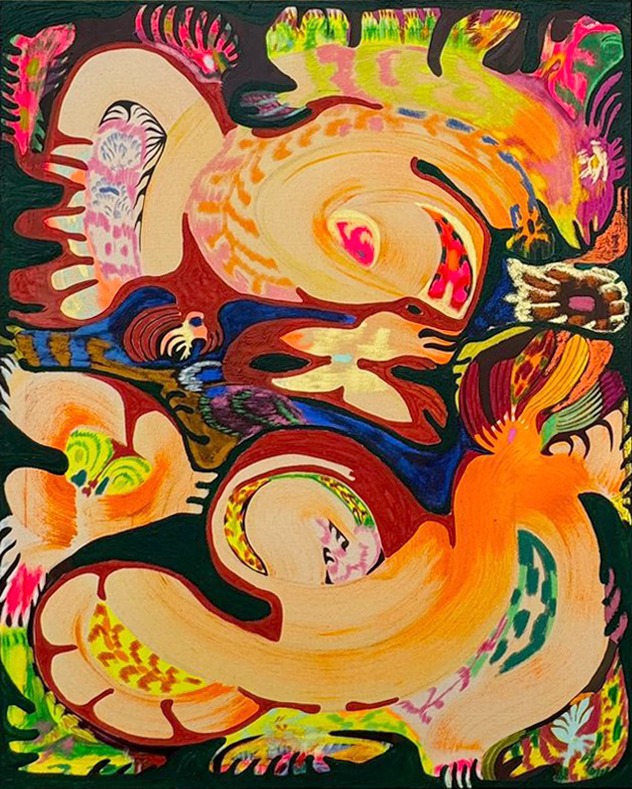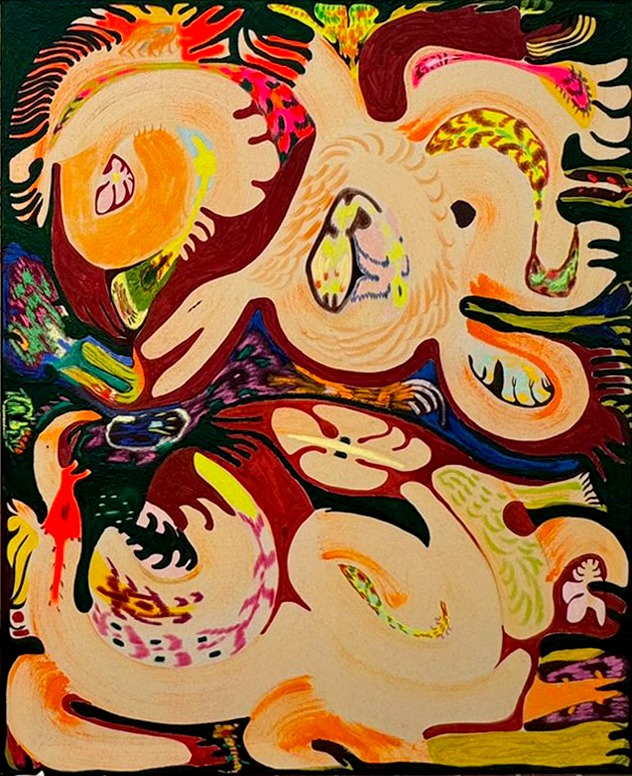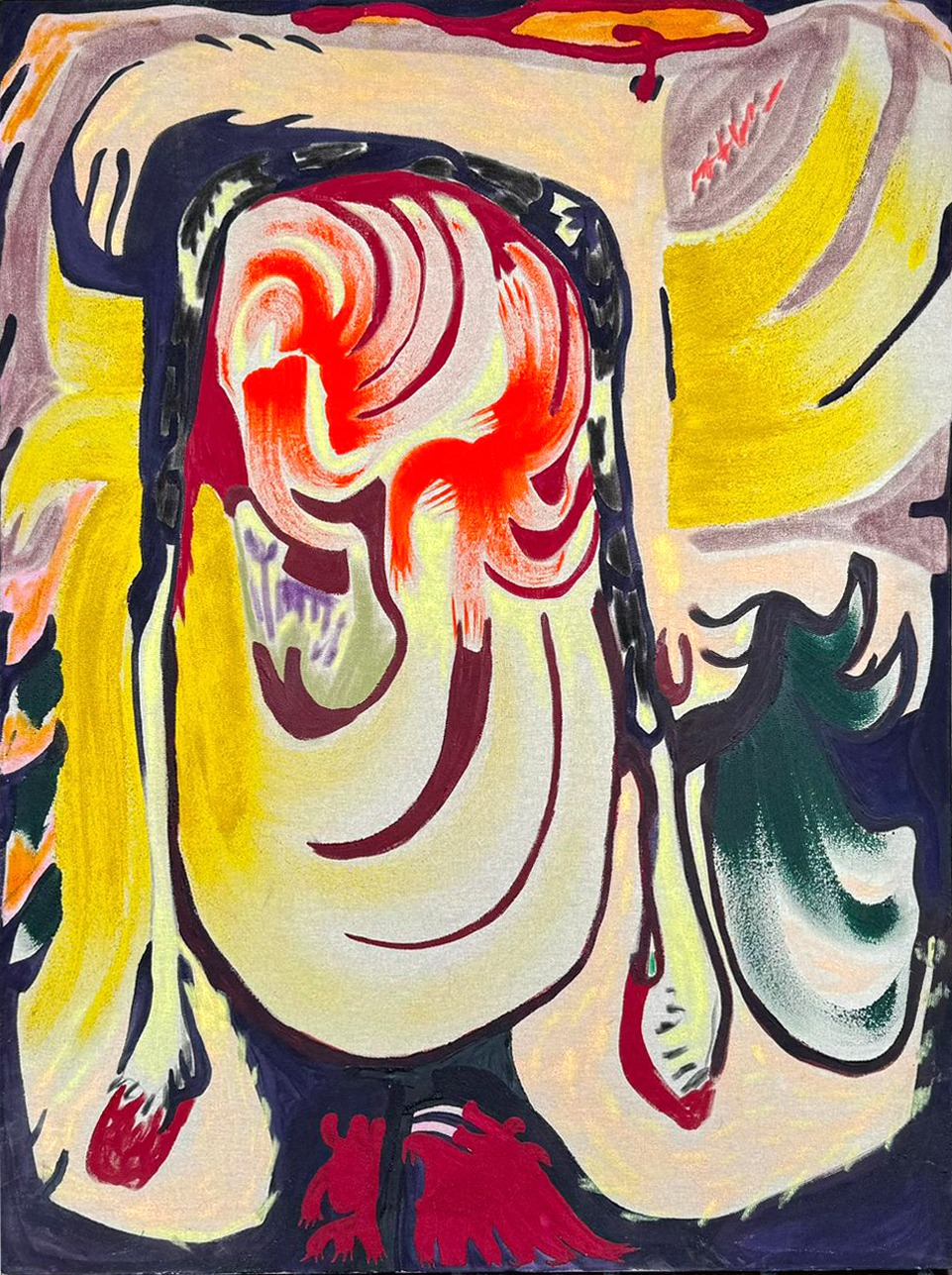Melania Toma
Born 1996, Padova
Lives and works in London
At the center of her practice lies the exploration of opposites, and how they can be broken down and merged to depict a new world of interconnectivity that challenges our age of the Anthropocene. Within these intersectional analyses, Toma’s work stitches personal narratives and myths into a wider transformative dimension – one that is possible with or without the presence of humans. Her practice incorporates its own language of symbols and forms, comprising elements – both new and atavistic, prehistoric and cellular, growing and decomposing – expressed through sculpture, textile and painting. Fertility symbols, birds, fish and flowers form the backbone of this shape vocabulary. Toma’s works are fundamentally organic. Her paintings appear to transform into newfound alien creatures, pulsating with a hermaphroditic fertility featuring the movement of organs and bones in a synchronous dance. These hybrid presences emerge from the interaction of different discarded organic and inorganic elements. Their interconnectivity and their power stand in opposition to humancentered perspectives, specifically historical webs of gender, power hierarchies and ecological degradation. Toma’s imagery dissolves boundaries between bodies and looks toward new relationships with ‘other-than-human’ domains of existence, embracing more collective and interspecies points of view that do not privilege humans over non-humans. Toma’s painting process collides dualities: large quick marks coexist with slender slow line drawings; thin layers of paint feature alongside coagulations of thick sand; the softness and sensuality of threads juxtaposes with the vibrant intensity of color against raw canvas; and overpopulated planes of the canvas coexist with silent areas of negative space. In her most recent works, the presence of bacteria, fungi and various microscopic elements allows Toma to merge the familiar with the unfamiliar, the ambiguous and the ugly. These works tap into the possibilities of the transformative power offered by shapes and motifs constantly in transition, between growth and decomposition.
Exhibitions



